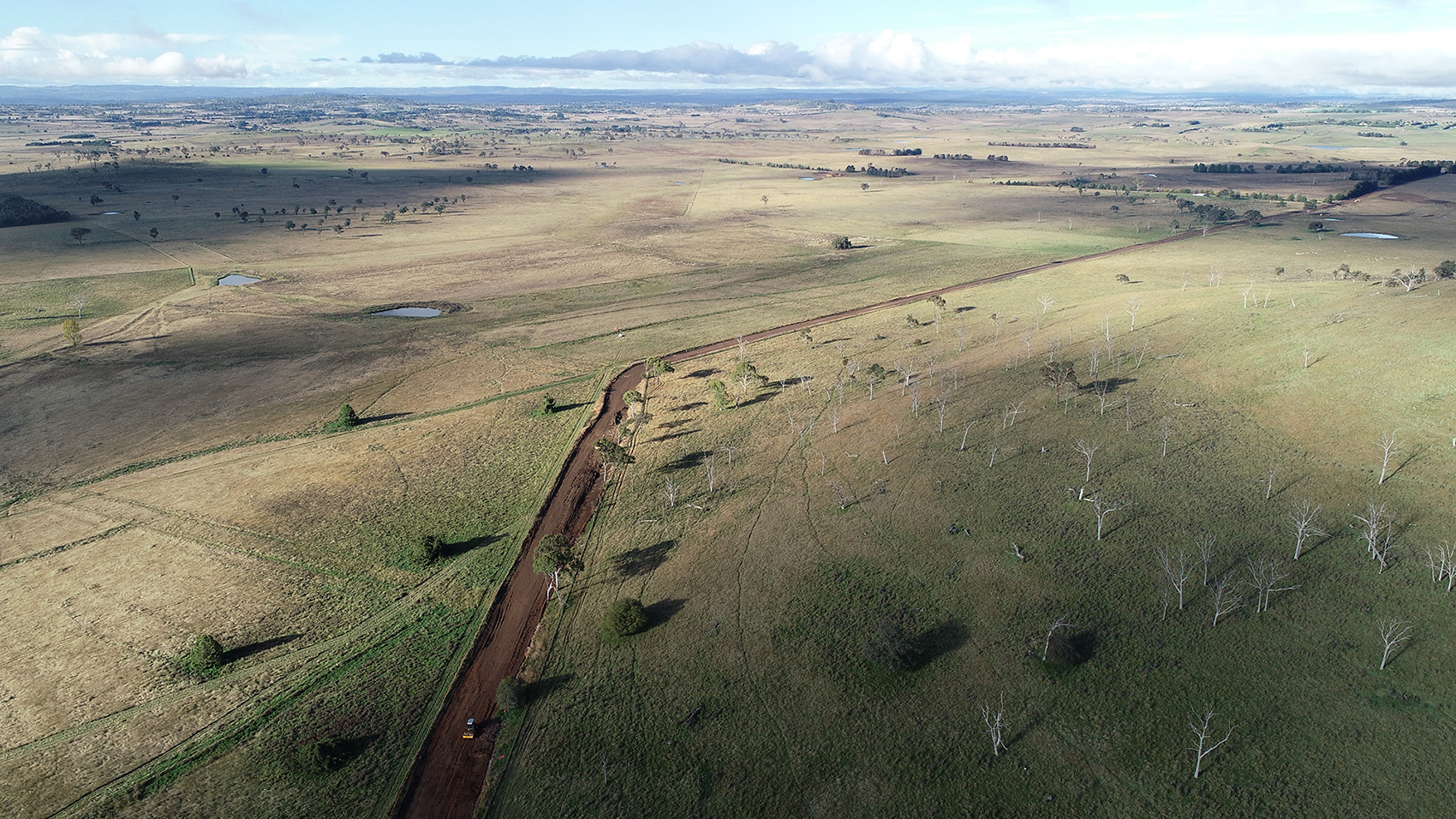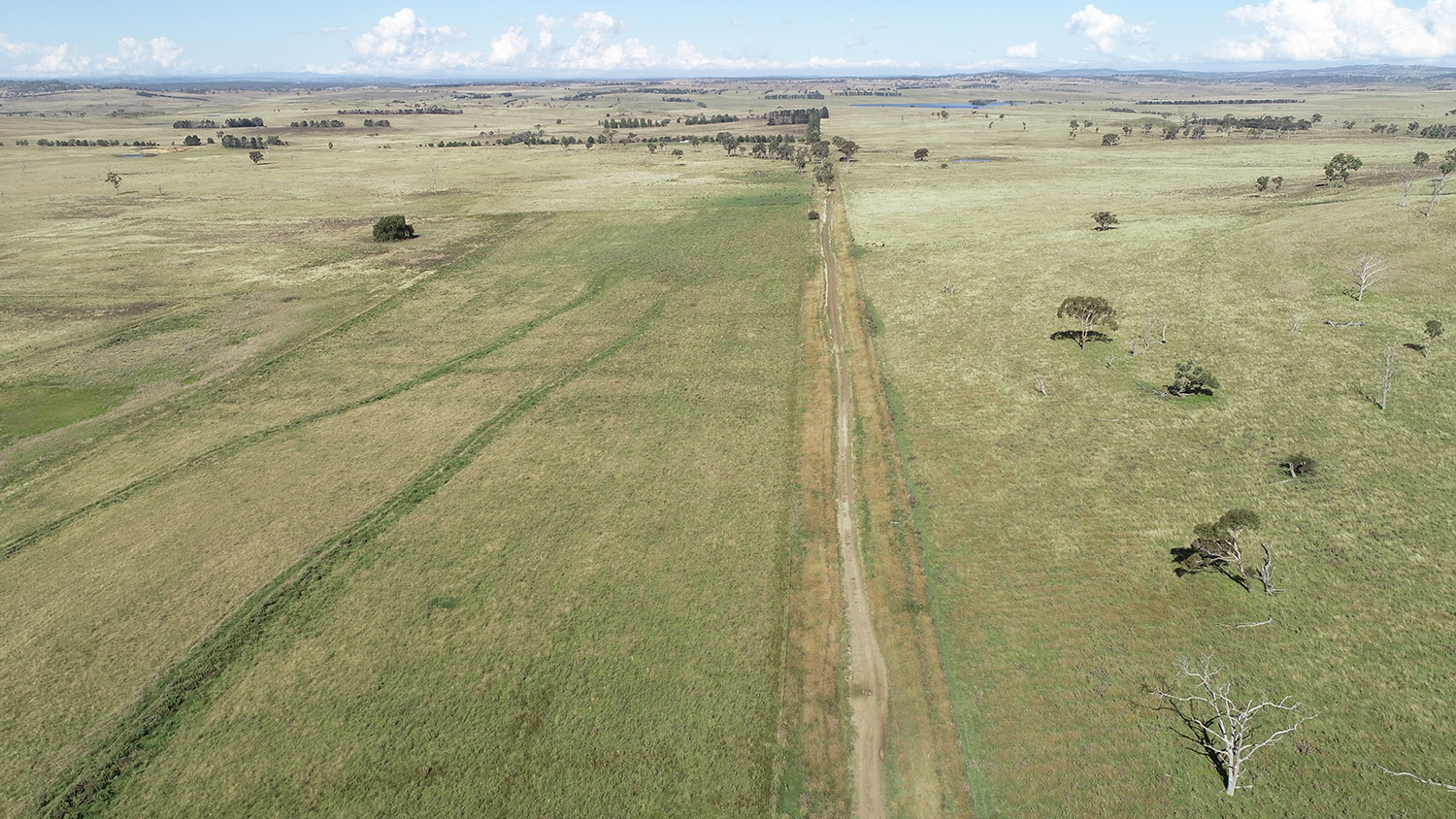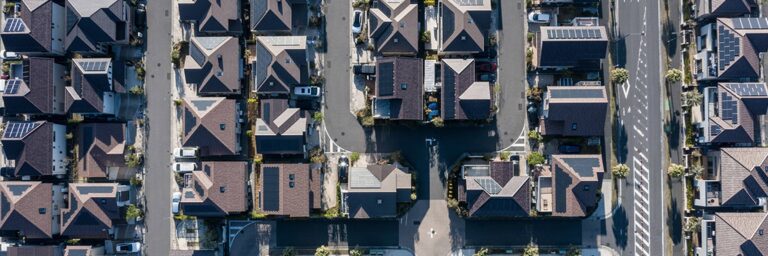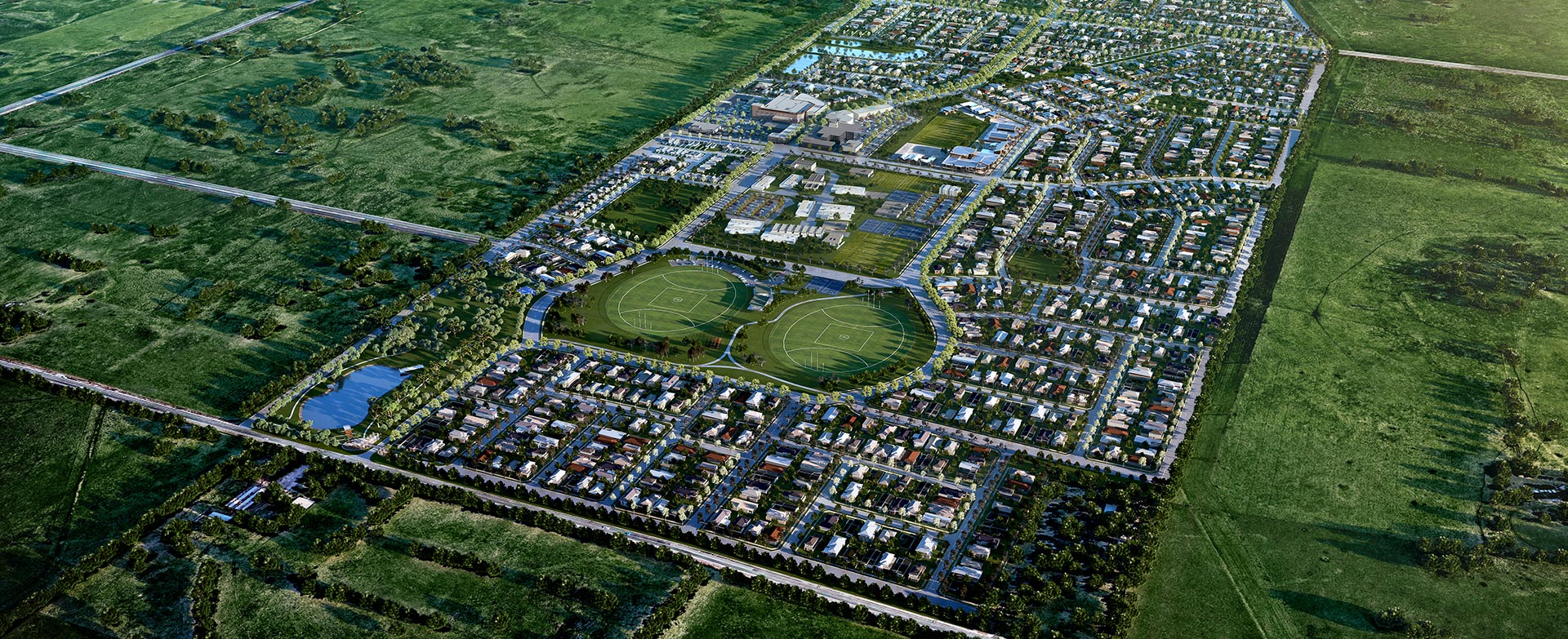

Know your site
Typically, to have a consistent tracker layout across a site, the most common design practice would be earthworks, or cutting land where minimum ground clearance to tracker module cannot be maintained. It would then involve filling land where trackers require taller posts than the maximum recommended by the manufacturer.
Earthworks can make the ground much more suitable for the installation of minimum height trackers saving costs on post lengths. However, it is an expensive exercise, and this grading of the land can create drainage issues by obstructing natural stormwater flow paths. Further, the removal of native soil and vegetation or the addition of fill can make these parts of the site more prone to erosion requiring erosion protection measures and scour protection of tracker piles.
As a solution to avoid or reduce earthworks, the team considered using extra-long post lengths for the arrays in areas of the site. 3D modelling software was also used to model the array height based on natural terrain and allowable maximum and minimum post heights and grades recommended by the manufacturer.
However, like other software available in the market, the 3D software we used couldn’t detect overland flood surfaces and automatically raise the trackers to achieve freeboard requirements. This is due to its limited functionality to identify and accept more than one surface and apply each surface to a design criteria. Due to the size of the catchments, the flood modelling software we used could not output the flood surface at a high enough cell resolution to natively merge with the ground surface in the 3D modelling software.
Our methodology was to merge the two surfaces (flood and land) outside of both software packages to make it one combined surface, which could then be input to the 3D modelling software as a new “ground surface”. This allowed the 3D modelling software to optimally raise the heights of tracker posts in flood areas to achieve flood freeboard while retaining the post heights at the non-flood surface same as before.
It was previously a time-consuming and iterative exercise to compare the flood depths and manually increase the post heights, resulting in the potential for errors and limiting the ability to check other impacts, such as shading. The use of the merged flood and land surface to optimise the achievement of flood freeboard resulted in a successful solution for the client.
For this project, SMEC delivered what the client called ‘pure innovation’. When pushing boundaries, a client who is actively involved in the process is empowered to make informed and confident decisions that will potentially also result in significant cost savings.
Know your stakeholders
Maintaining open communication and knowledge sharing between the project team and our client was essential to our successful project design for the New England Solar Farm. All stakeholders need to be engaged, including the client, engineers, mounting system provider, internal teams and construction teams. When exploring and adopting new technologies and innovative solutions mutual trust is imperative. There will be ‘experimental moments’ when trialing new ideas, and ensuring all members of the project are well informed and being able to openly address complex and, sometimes worrying, questions is key to building that trust and ultimately, being able to deliver the best outcome for all parties.
For this project, SMEC delivered what the client called ‘pure innovation’. When pushing boundaries, a client who is actively involved in the process is empowered to make informed and confident decisions that will potentially also result in significant cost savings. For example, when the client requested to have a pile schedule that contained all of the necessary information, our methodology showed that we could manipulate all trackers within standard post height ranges to align with the natural surface while achieving flood freeboard and minimum earthworks. We were able to present the data in an easy-to-use and understandable format for a GPS guided pile ramming machine on site.
While engineers have all encountered drainage issues before, thanks to our project team’s approach which we developed in-house, we achieved exactly what we wanted from the software and the project was a resounding success.
Know your future
It’s likely that on all solar farm sites going forward, there will be a need to facilitate drainage flow paths and there will always be limitations on post heights and associated constraints. We will always therefore need to fit more trackers and can no longer say we will work only with a flat surface, even though it’s ideal to avoid drainage flow paths.
As has always been the case in our field, the only real constant is change. It will always be our jobs to adapt to fit the needs of the environments we operate in, the clients we advise and the communities we design.
Whether it’s through the latest data-driven technology or the most time-tested communication practices, using knowledge and information to inform project decision-making and providing out-of-the-box solutions will be ever-critical. It will allow us to deliver more and more successful projects that are on time and within budget.
Get to know the project and the author
Julie served as the Project Manager on the New England solar farm for Green Light Contractors (GLC), the Australian EPC arm of Spanish contractor Elecnor, to deliver the technical support, concept and detailed engineering design works on Stage 1 of the New England Solar Farm in Uralla, New South Wales. When designing solar arrays for the undulating terrain, SMEC’s solution saved the client a significant amount of money and time with their innovative approach. The New England Solar Farm is being developed on two sites near Uralla, in New South Wales. The project is expected to produce 1.8 GW of renewable electricity, capable of powering more than 250,000 homes. SMEC provides concept advice, design and support across geotechnical, environmental, civil, structural and electrical disciplines working alongside Green Light Contractors (GLC), Spanish-owned Elecnor and renewable energy developer UPC\AC Renewables Australia.
The New England Solar Farm will become a 720 MW Solar installation combined with a 400 MWhr battery energy storage system on-site. This first stage of the enormous project will be connected to the National Energy Market (NEM) and will be producing clean solar energy by July 2022, with a tentative date near the end of 2023 for the entire project to be operational.
Related
insights
 Australia’s renewable energy sector - 2019 and beyond
Australia’s renewable energy sector - 2019 and beyond
A fifth of the world's energy consumption was supplied by renewables in 2018 and research has shown that global renewable power capacity could provide more than a quarter of the world's electricity within the next few years.
 Could Virtual Power Plants be the answer to Australia’s energy woes?
Could Virtual Power Plants be the answer to Australia’s energy woes?
Australia is in the midst of a significant energy transformation. It’s estimated that by 2040 the vast majority of Australia’s coal-fired power stations will have been retired, and the nation should be running on 85% renewable energy.
 Creating an enviable work environment for SMEC
Creating an enviable work environment for SMEC
It’s not very often you hear people say they are genuinely proud of where they work; its people, its achievements and reputation in the marketplace.
 70 Years Forward: Urban communities
70 Years Forward: Urban communities
Urban development has changed dramatically over the past 20 years and future transformation will continue to occur swiftly. At SMEC, we are preparing for seismic shifts in urban development practices that could potentially rewrite how we design the spaces in which we live and work.




